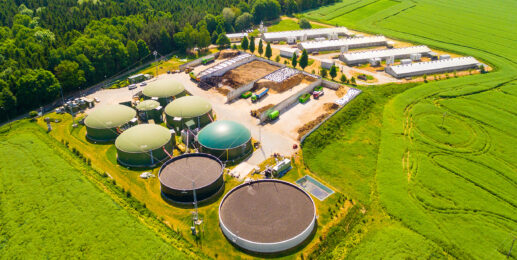
Corporate sustainability leaders will know that implementing effective carbon transition plans is no easy task. Yet, it has never been more important.
Building realistic and actionable processes is vital to meeting disclosure standards and obligations, corporate commitments, and ultimately drive tangible business value. Recognising the complexity of this environment, Marex hosted a panel event where sustainability officers explored how companies can stay ahead of changing regulations, deliver on their commitments, and future-proof their transition plans. Click here to be informed of future sustainability events.
What are the top five things influencing corporate sustainability in 2025?
ESG and sustainability have been under attack, but companies remain committed
Despite recent calls for regulatory rollbacks, companies should not interpret this as a signal to retreat. Rather, it reflects an opportunity to recalibrate.
While regulatory frameworks are being reassessed across the EU, UK, and the US, they are not being dismantled. Companies should prepare for change, not an absence of regulations altogether. In the meantime, clients, investors, and other stakeholders continue to expect clear, credible climate action. Those who remain committed will stand out as others pause or pivot.
Supply chains are critical: engage upstream and downstream
Sustainability officers cannot create accurate and realistic emissions and decarbonisation plans without a clear understanding of their company’s supply chain carbon exposure. In many cases, most emissions come not from a company’s own operations, but from a particular Scope 3 category – the supply chain. For this reason, direct interaction with top suppliers and partners across supply chains is key to building realistic and effective decarbonisation plans.
The responsibility is mutual. Just as companies are assessing the emissions of their suppliers, they are increasingly being held accountable by clients and partners for their own carbon footprint. Whether quantifying emissions or meeting expectations, close coordination across the supply chain is vital.
More on Scope 3 is coming – prepare now to future-proof your reporting
Historically, most sustainability reporting directives and regulations have focused on Scope 1 and Scope 2 emissions. But Scope 3 is gaining regulatory attention and may soon become mandatory.
Because Scope 3 emissions lie outside a company’s direct control, they are the most difficult to monitor for, disclose, and control. For this reason, organisations are taking a materiality approach where they prioritise the Scope 3 emissions with the largest operational impact.
With regulations likely to include Scope 3 emissions, it’s important that companies invest in monitoring, measuring, and managing Scope 3 emissions. Those that do will be better positioned for future regulatory developments.
When decarbonisation isn’t enough, make the most of the voluntary carbon market
Decarbonising is at the heart of the climate transition, and while companies are progressively making their operations and supply chains greener, part of their operations might be impossible to abate.
Companies, regardless of the sector, should look to establish a plan to offset any residual emissions by participating in voluntary carbon markets (VCMs). Standards and verification methods are developing to ensure a high-integrity VCM where companies can offset their unavoidable emissions effectively and with confidence.
However, there are still significant differences in credit quality and price. Carbon removal credits are highly sought after and have higher prices. To ensure access, large organisations often purchase large numbers through long contracts, meaning high-quality removal credits are harder to obtain in the Over-the-Counter (OTC) market.
As the voluntary carbon market matures, standards evolve, and prices increase, companies looking to offset their un-abatable emissions will require a well-defined credit procurement strategy to secure high-quality credits at the best prices.
With new technology come new challenges – AI might pose the largest of them all
Every sustainability officer knows that disclosure of a company’s carbon emissions is a hard and complex process, but as new technologies develop and companies increase the usage of artificial intelligence, the process may become even more challenging. AI is increasingly integrated in day-to-day activities, so if organisations are committed to realistic and transparent emissions disclosures, they will need to track and disclose their AI carbon footprint.
Calculating AI-related emissions, however, is complex, but methodologies are beginning to emerge. Though not yet required by regulation, AI emissions could become a reporting consideration, either through future rules or supply chain expectations. Sustainability leaders would do well to stay informed and experiment with early-stage tools now to avoid being caught off-guard later.
What is the state of sustainability today?
ESG may be facing short-term headwinds, but the fundamentals haven’t changed. Regulatory obligations remain in place, stakeholder expectations persist, and new disclosure demands are emerging.
In this environment, sustainability leaders must balance flexibility with preparation. By engaging proactively across their value chains, anticipating future requirements like Scope 3 and AI emissions, and remaining focused on high-integrity decarbonisation strategies, companies can build resilience and drive value regardless of what lies ahead.





